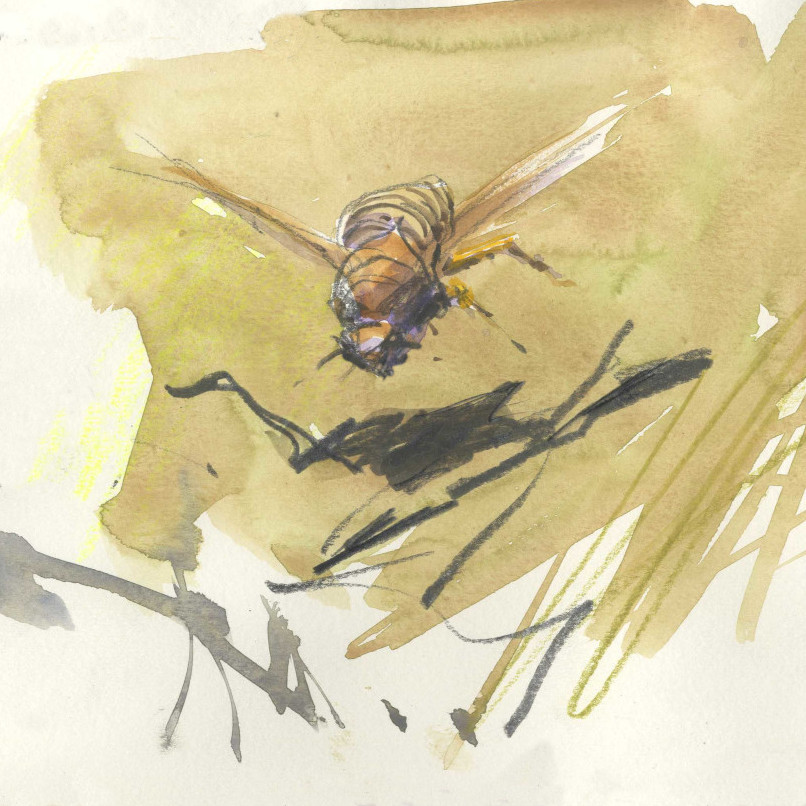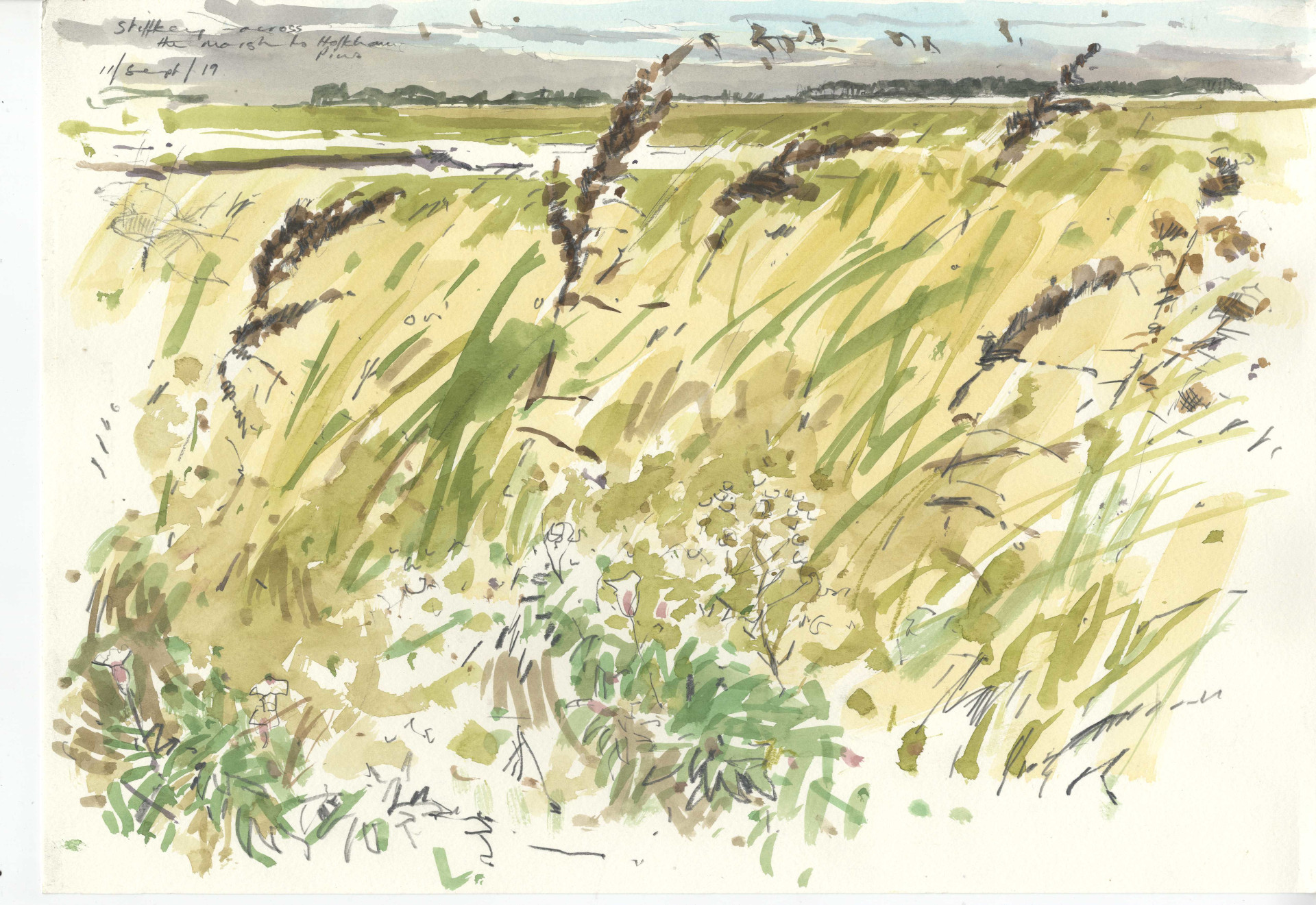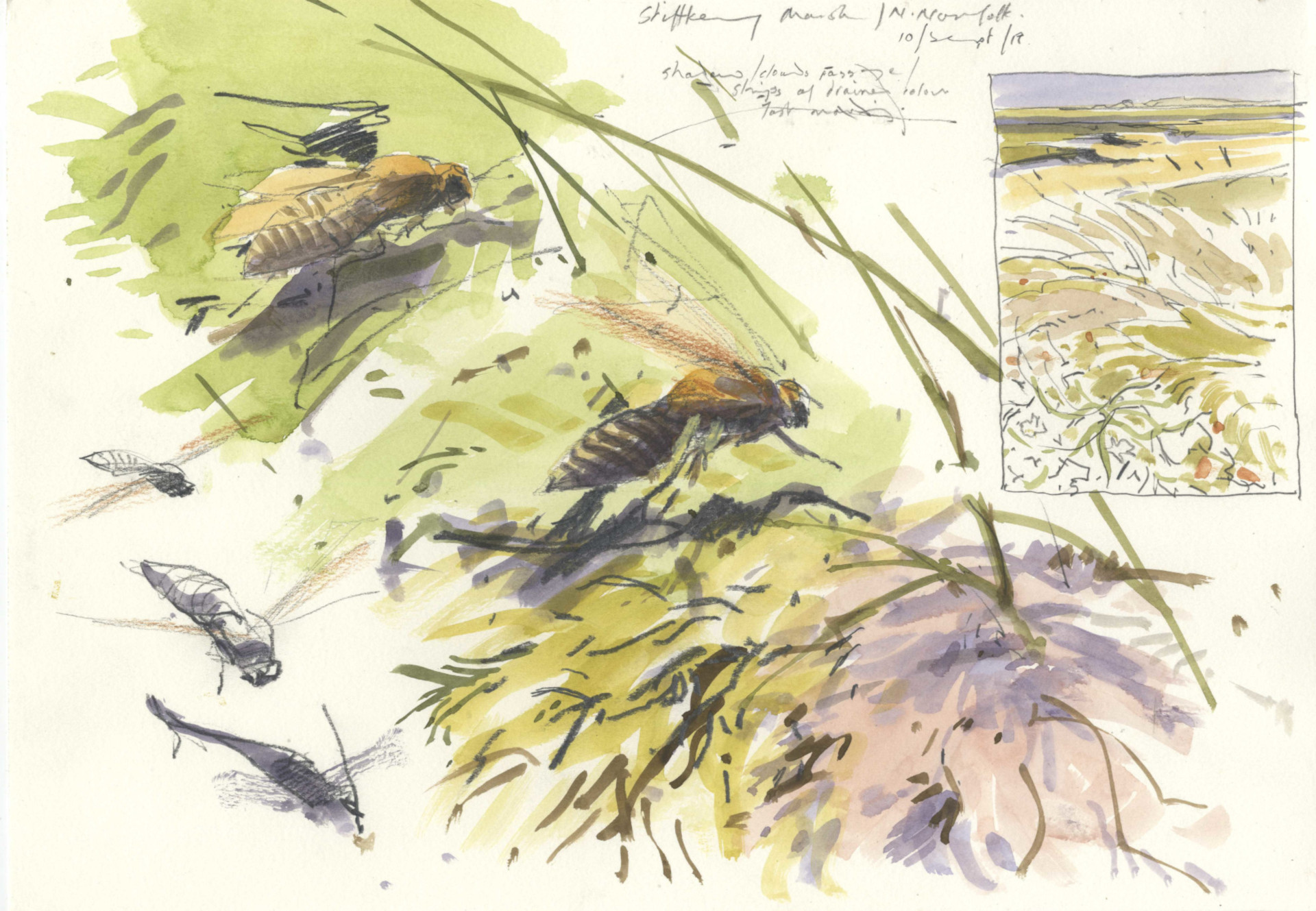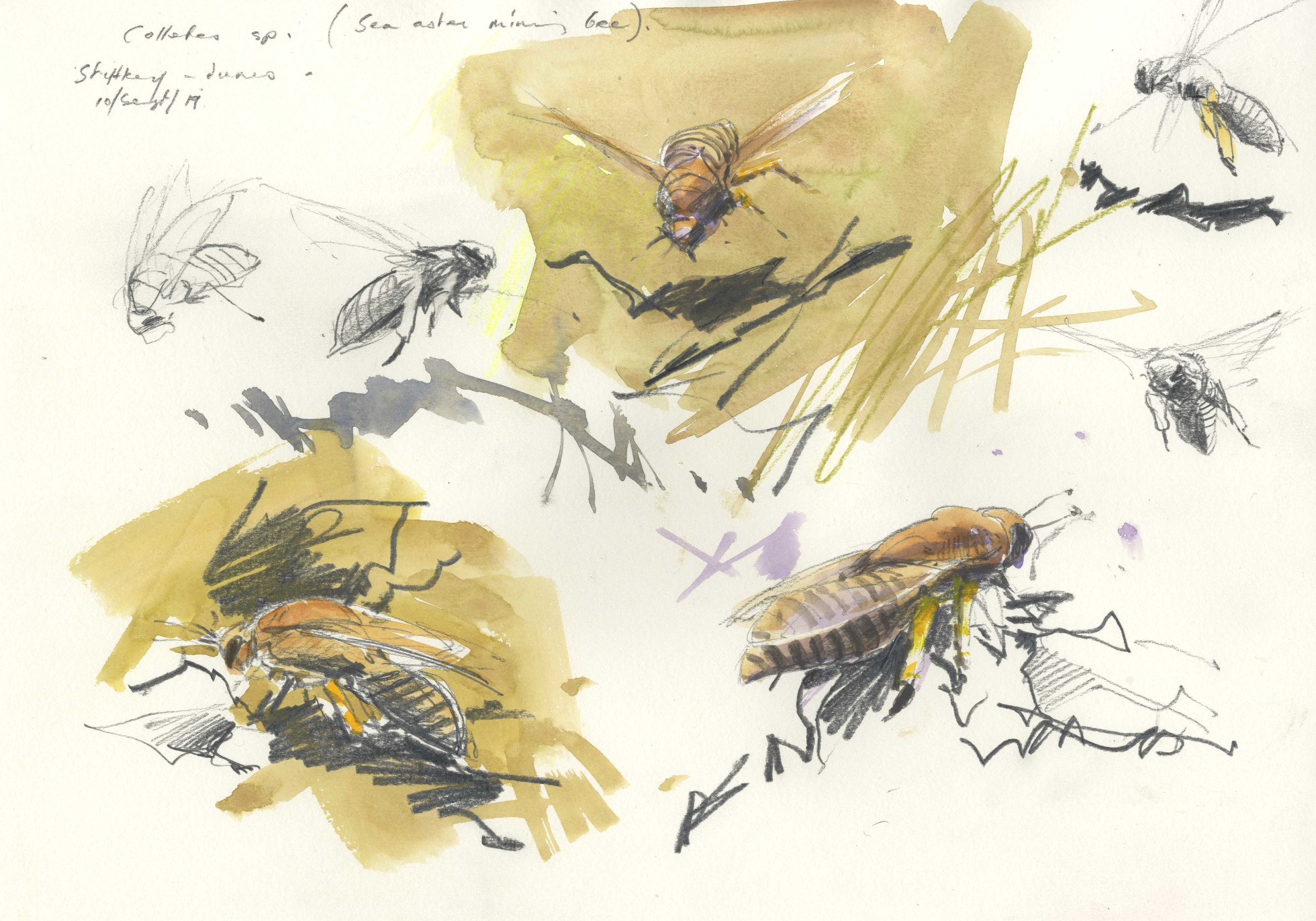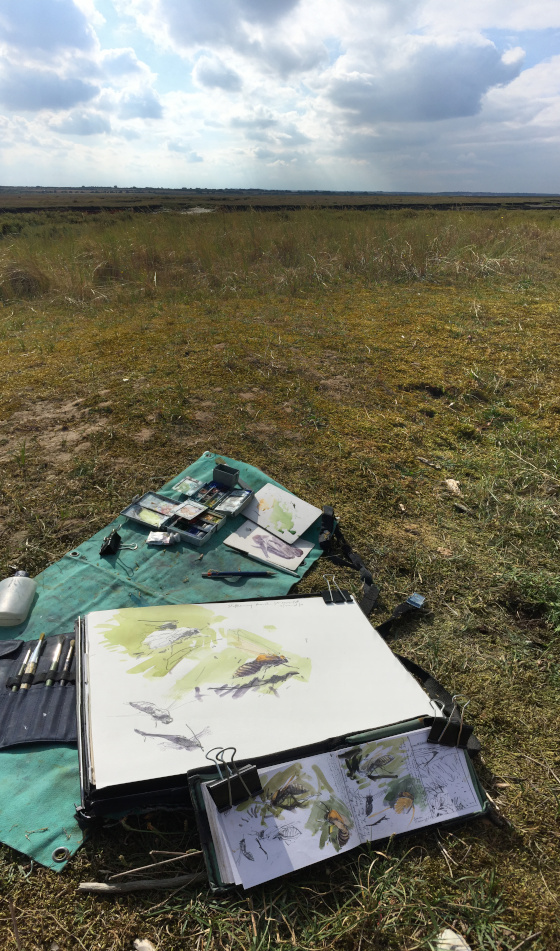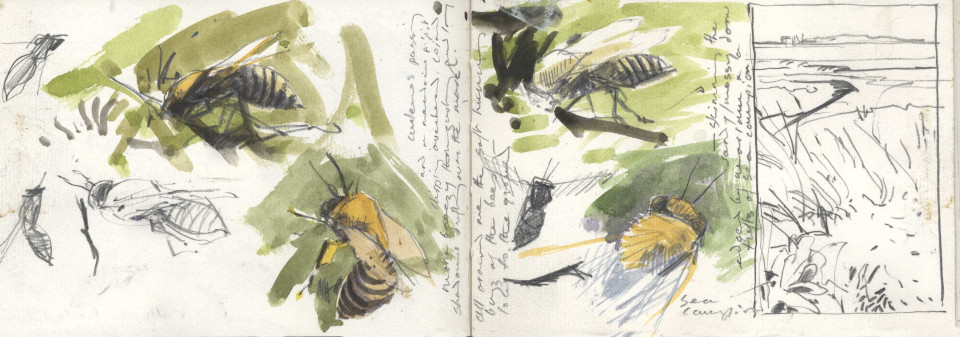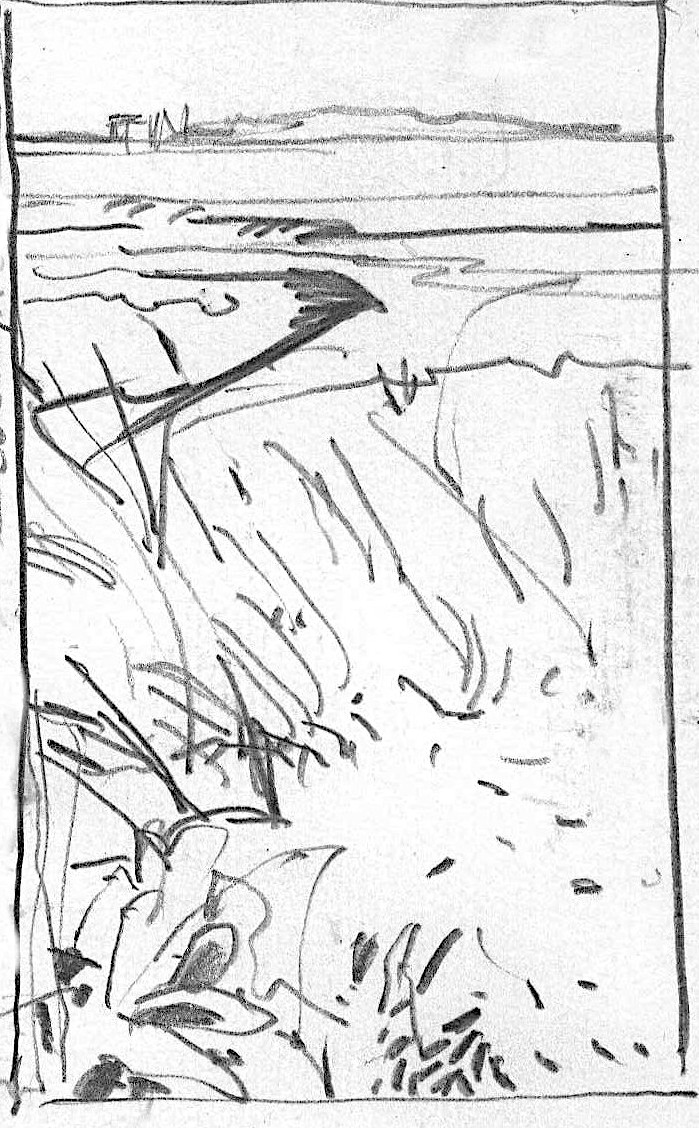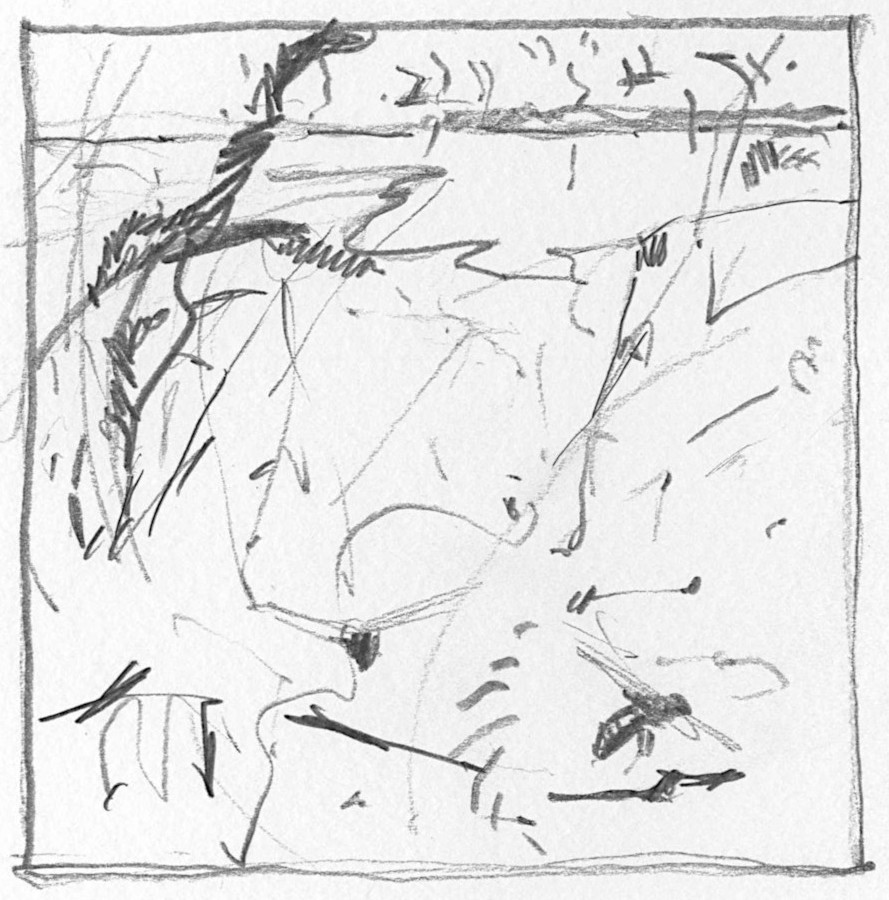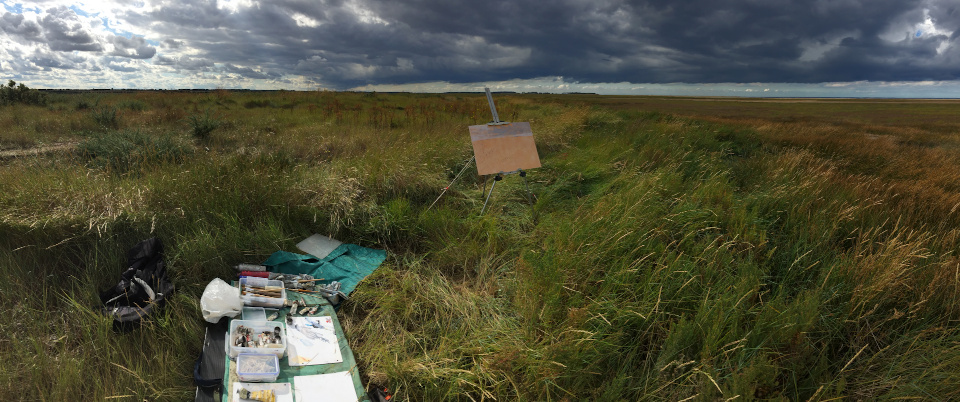
In the Field - North Norfolk
September 2019
A couple of days painting on the marshes around Stiffkey and Warham - with a few hours looking closely at an area busy with hundreds of Sea aster mining bees.
With good weather in prospect I headed for North Norfolk for a couple of days painting on the marshes around Stiffkey and Warham. On the second day with a low tide well timed for early evening I set off early to get way out to the seaward edge of the marsh. It was on a rise in the ground with patches of marram grass, sea campion and open sandy ground that I noticed a lot of bee activity. There was much movement low down as the bees landed and lifted to swirl about and settle again before suddenly starting to squeeze down into tiny tunnels under pebbles, between fallen grass fronds and dry debris. So I crouched down to watch them - and became absolutely entranced by their activity, their beautiful colouring and fascinating behaviour. It was not until I got home to my reference books that I was able to identify them as Sea aster mining bees. The Sea Aster mining bee (Colletes halophilus) is one of three closely related Colletes species. It is a solitary bee belonging to a group known as ‘mining bees’, a term relating to their habit of excavating burrows in the earth in which to nest. Very limited in its distribution it is found only in low-lying coastal areas of the eastern English Channel, the Atlantic coast of France and the southern North Sea. Within the UK the species is restricted to the coast, occurring at near sea-level habitats - saltmarsh margins, sea walls, dune systems, low cliffs and behind beaches - around the east and south of England with particularly significant strongholds in East Anglia and the Thames Estuary. |
The Sea Aster mining bee is strikingly coloured with reddish brown hair on its thorax and a black abdomen with clearly defined pale whitish to yellow bands; males are smaller and paler in colour. Males emerge first and can be seen scouting for females to mate with in August. As females emerge, large numbers of males can sometimes gather to mob females clustering together in a ‘mating ball’. Females then start excavating nest burrows with around 5 - 6 cells laying eggs in each and provisioning them with pollen and nectar. Individuals of this species gather nectar from a wide range of plants but the females will only collect pollen from plants of the Sea Aster family with the bee’s emergence synchronised with the main flowering period. The bee not only needs to collect pollen for its young, it also needs this protein itself along with energy from sugary nectar in order to remain active for as long as possible. Nests are often in large aggregations, typically at the transition zone between intertidal saltmarsh and dry land. Their nest burrows are often excavated in soils with a high sand content and little vegetation cover. Their foraging and nesting activity will continue until around the middle of October or occasionally early November by which time all individuals will have died; the males first followed by the females. The young overwinter in their cells and emerge in the summer as their parents did the previous year and the whole cycle begins again. Unfortunately, throughout its wider range intense development pressure, reduction and degradation of salt marshes, expanding urban sprawl, and inappropriate grazing regimes - as well as rising sea levels associated with climate change - all place increasing pressure and threaten this specialised and vulnerable bee species. But the east of England is a stronghold and the north Norfolk coast particularly so with its significant mix of saltmarsh and sand dune habitats providing a stable mix of food plant and nesting habitats.
|
|
The idea behind small thumbnail sketches like this (one is about 6cm x 10cm, the other about 10cm x 10cm) is to try and strip out the essential elements in an experience. Here it is the movement of the bees, the characteristics of the landscape, the light and the passing curlews spread over a period of time. Then I try to quickly assemble those bare fragments in a way that creates a more tightly focused and more abstract interpretation of the habitat and its natural history. |
© Bruce Pearson 2025. All rights reserved
